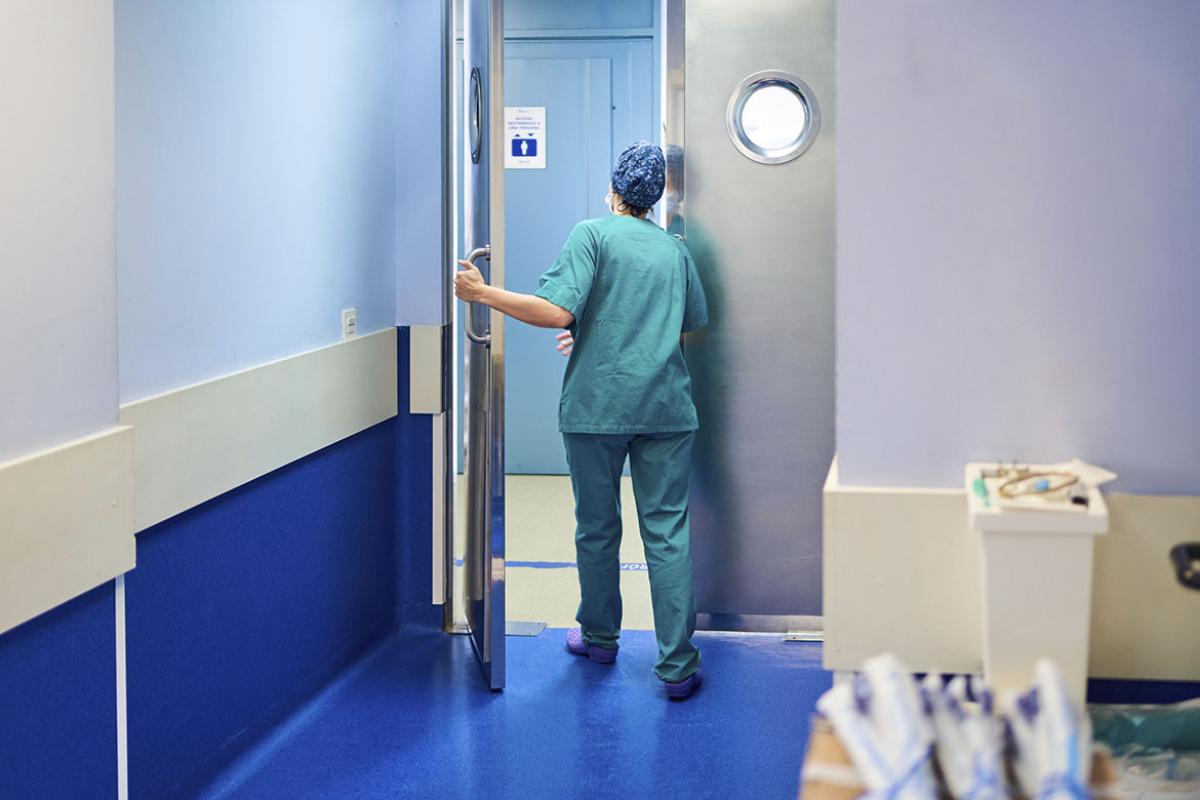Nearly half of the U.S. population is affected by hypertension, and multiple studies have found it to be common among COVID-19 patients, particularly those who were put on a ventilator, entered the intensive care unit or died. When that information is combined with the fact that 48% of adults say they or someone in their household rescheduled or passed up medical appointments because of SARS-CoV-2, the virus that causes COVID-19., physicians today are left with a quandary: How can they help patients control their BP from home?
The answer is self-measured blood pressure (SMBP) monitoring. With SMBP monitoring, patients can measure their blood pressure at home twice daily for seven days, and then provide that information to their medical team. This helps physicians and other health professionals help patients with hypertension achieve and maintain their BP goals.
“They don’t even have to come into the office,” said Daichi Shimbo, MD, a professor of medicine and the director of the Hypertension Center and Translational Laboratory at Columbia University in New York. “They transmit the information to the clinician and the clinician can review those readings and then make a judgment of how that individual is doing.”
Dr. Shimbo recently talked about the importance of SMBP monitoring with Greg Wozniak, PhD, the AMA’s director of outcome analytics, and Hillary K. Wall, MPH, a senior scientist in the Centers for Disease Control and Prevention's division for heart disease and stroke prevention and the science lead for the Million Hearts Initiative. The conversation was part of the AMA’s daily series of COVID-19 video updates.
“Self-measured blood pressure monitoring was important prior to COVID-19, and it's becoming even more important now—and after—in getting patients under control and maintaining their blood pressure values,” said Wozniak.
Allows monitoring from afar
New York City was the epicenter of COVID-19 in the United States this spring, but it recovered over the subsequent months. Still, as many New Yorkers tried to get comfortable with their new reality, Dr. Shimbo and his colleagues at Columbia University Medical Center found that many patients still did not want to visit a hospital for routine appointments.
“A lot of patients are scared to come to our medical center,” he said. “In fact, there are many patients with hypertension who just didn't end up coming to the hospital, and many of those unfortunately actually have uncontrolled hypertension.”
SMBP monitoring is an ideal solution for these patients, particularly because they are able to transmit their measurements to their physician. These measurements influence what medications a patient needs, how much exercise they should get, what their diet should be, and more, so they play a key role in a person’s daily life. Because of that, it is important to have a person’s medical team be involved in the reading of these measurements to keep their hypertension in control, even if they don’t make it into the office.
There are a number of reviews that indicate SMBP monitoring can decrease BP in patients and improve hypertension control, Wall said. Other studies show that SMBP monitoring can improve medication adherence as well as patient engagement while decreasing clinical inertia, she added.
Patients are included in their care
Before learning how to use their SMBP device, patients first need to ensure they are getting a validated device so they can be confident the numbers reported are accurate.
“It’s very important that a validated machine is used,” Dr. Shimbo said. “That’s particularly important because the market is actually flooded with a lot of devices, many of whom are actually not validated.”
Patients can visit validatebp.org—the US Blood Pressure Validated Device Listing (VDL™)—to check if a device is validated. There are now 16 devices featured on the site.
Read the six takeaways doctors should know about the new SMBP policy statement.
Once a patient has their validated device, the next step is to be taught how to use it and monitor their blood pressure. Dr. Shimbo provided some best practices, including that every time a person takes a reading, they should be:
- At rest.
- Seated with their back supported.
- With their feet flat on the ground.
- Using a proper cuff size.
Physicians can download the AMA’s seven-step SMBP quick guide to learn more.
Beyond the device and the basics, the key to making SMBP effective is to think of it as a partnership, not just a project that patients do on their own, said Dr. Shimbo.
He said SMBP is most effective when done in conjunction with other interventions. Physician practices should not be giving the BP-monitoring “device to the patient saying, ‘Good luck. Measure your blood pressure. I’ll see you in a week,’” he said. “In fact, you’re helping them understand, you’re following up with phone calls, you’re educating them, helping to manage their medications, also helping them manage their treatment strategy.”
The AMA has developed online tools and resources created using the latest evidence-based information to support physicians to help manage their patients’ high BP. These resources are available to all physicians and health systems as part of AMA MAP BP™.



